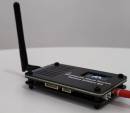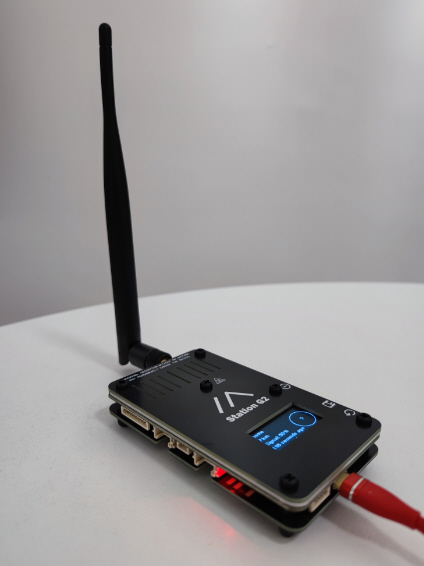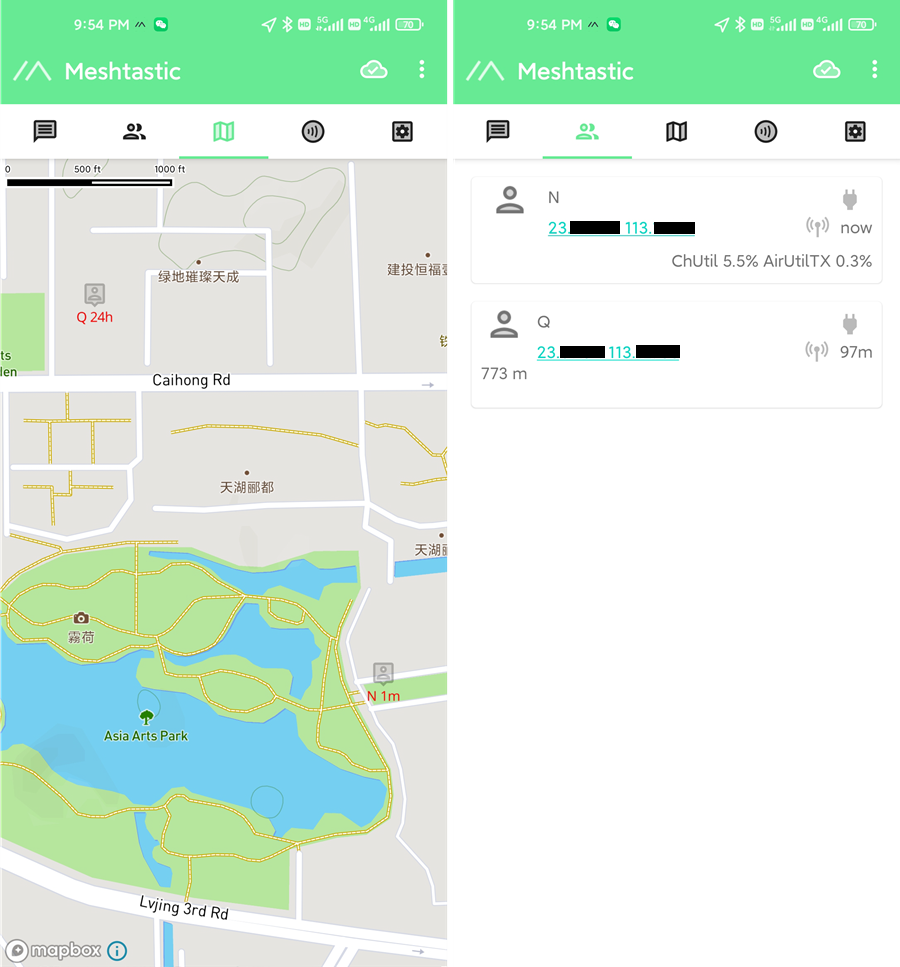[Click Here for An Overview and Comparison Table of our Products for Meshtastic ]
Design for fixed-location base stations and vehicle-mounted base stations.
About Meshtastic: https://meshtastic.org/docs/about
Meshtastic Youtube Channel: https://www.youtube.com/meshtastic
Overview
Meshtastic Mesh Device Station G2 is an upgraded design of Station G1, using the latest ESP32 S3 MCU. As an RF research project, Station G2 also brings key updates in RF. The primary RF design goal of Station G2 is to improve the Lora receiving sensitivity by about 4dB based on a dedicated Ultra-Low Noise Figure LNA. And to increase the transmit power and improve Signal to Noise ratio of short data packets by designing the Fast-Transient DC-DC for 35dBm Lora PA.
For Lora Power Amplifier, the 1 dB Compression Point (P1dB) is 35 dBm (3.16 W), and the maximum RF output power is 36.5 dBm (4.46 W) for US915 and 37 dBm (5 W) for EU868.
Station G2 has a rugged SMA antenna socket and rich external IO interfaces. It can be powered by either 15VDC USB Type C PD protocol or 9VDC-19VDC External Power Supply. These features make Station G2 ideally suited as a Fixed-Location Base Station or Vehicle-Mounted Base Station.
Typical RF Performance
| Item | Description |
|---|---|
| Lora Operation Frequency | 815 Mhz to 940 Mhz |
| Lora Max RF Output Power | 36.5 dBm (4.46 W) for US915 and 37 dBm (5 W) for EU868 |
| 1 dB Compression Point (P1dB) | 35 dBm |
| Lora Ultra-Low Noise Figure LNA | Typical Gain: 18.5 dB, Typical Noise Figure: 1.8 dB |
| LoRa Transceiver | SX1262 |
| High-Precision Frequency Reference for Lora | 32MHz TCXO (+-1.5 ppm) |
| WIFI | YES |
| Bluetooth | v5.0 |
| Positioning And Navigation Module | Optional (1x GROVE GPS Socket) |
Note: The Lora RF Output Power preset to 30dBm as default for operation with license-free ISM band. [Info For Geeks]
Features Comparison of Station G2 and Station G1
| Editions | Station G2 | Station G1 |
|---|---|---|
| Core Research Areas | Ultra-Low Noise Figure LNA for LoRa Fast-Transient DC-DC for LoRa PA |
Modern Cost-Effective RF Power Amplifier RF Components/Materials Measurement and Modeling |
| Photo |  |
 |
| Product Status | ACTIVE | OBSOLETE |
| Current Hardware Version | 20 Feb 2025 | 20 Sep 2022 |
| Initial Release Date | 18 Jan 2024 | 12 Jun 2022 |
| Lora RF Max Output Power | Up to 35 dBm (P1dB Point) | Up to 35 dBm (Maximum RF Output Power) |
| Frequency Reference for Lora | 32MHz TCXO (+-1.5 ppm) | 32MHz XTAL (+-10 ppm) |
| Lora Ultra-Low Noise Figure LNA | Typical Gain: 18.5 dB, Typical Noise Figure: 1.8 dB | – |
| Fast-Transient DC-DC for LoRa PA | Transient Response Time < 18us, Maximum Transient Voltage Deviation < 275mV, Phase Margin > 66.73 Degrees, Ripple < 30mV, Test Condition: 0A-3A@7.5VDC Dynamic Test, Input Voltage 15VDC | – |
| LoRa Transceiver | SX1262 | SX1262 |
| Lora Operation Frequency | US915MHz / EU868MHz | US915MHz / EU868MHz |
| MCU | ESP32 S3 (Flash: 16MB, PSRAM: 8MB) | ESP32 (Flash: 4MB, PSRAM: -) |
| WIFI | YES | YES |
| Bluetooth | v5.0 | v4.2 |
| Satellite Navigation | Optional (1x GROVE GPS Socket) | Optional |
| USB Connector | Type C (PD Protocol) | Type C (PD Protocol) |
| Screen | 1.3 Inch OLED Screen | 1.3 Inch OLED Screen |
| Battery | – | Optional 12V Battery Docker |
| Power Input Socket | 15VDC USB Type C PD protocol, 1x5P Pitch=1.5mm Socket (9VDC-19VDC External Power Supply) | USB Type C, 1x2P Pitch=2.5mm Socket |
| LoRa Antenna | SMA Socket | SMA Socket |
| Accessories | 1x GROVE GPS Socket, 1x GROVE I2C Socket, 1x SparkFun QWIIC I2C Socket and 1x IO Extension Socket | 1x IO Extension Socket |
| Typical Scenarios | Fixed-Location Base Stations and Vehicle-Mounted Base Stations | Fixed-Location Base Stations and Vehicle-Mounted Base Stations |
Use Cases
Due to the excellent Lora transmission/reception performance of Station G2, Station G2 is used to build backbone mesh networks in many regional Meshtastic communities.
Since the receiving sensitivity of Station G2 is about 4dB higher than that of most other devices. In addition, the LNA can also be used as a bandpass filter to improve the signal-to-noise ratio (SNR) of the received signal. This allows Station G2 to receive weaker signals, thereby helping more low-power nodes in the area to relay messages. The deployment of Station G2 helps build a larger coverage and more stable Meshtastic Mesh network.
The following figure shows a typical coverage map of Station G2 OHR node deployed by Meshtastic Bay Area Group in California. (Screenshot taken on 18-Jul-2024):








Reviews
There are no reviews yet.